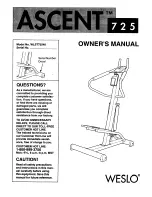
EN
Unbound Scalable Fonts 9-11
TrueType example: If a symbol set based on Unicode numbers
requires one or more characters from the standard ASCII collection
and some of the characters from the Latin 5 collection, then bits 31,
28 and 0 are set to one (refer to Appendix D in the PCL 5 Comparison
Guide
for information regarding the various symbol collections).
As stated above, to determine which unbound scalable fonts contain
the symbols for the specific symbol set, the printer must identify those
unbound fonts that contain the symbol collections of the requested
symbol set. To do this, the printer accesses the Character
Requirements number for the requested symbol set. If, for example,
the Roman-8 symbol set was requested, the printer would access the
Character Requirements number from the Roman-8 symbol set
information in the printer. This number is then compared with the
Character Complement number of each unbound font in the printer. If
any matches are found, those unbound fonts are included in the list of
potential fonts for selection.
Final Font Selection
After the process above is complete, the printer contains a list of all
fonts (bitmap, bound, and unbound) which support the requested
symbol set. (If no fonts are found for the specified symbol set,
Roman-8 is used. If more than one font remains, the printer continues
comparing font selection characteristics, eliminating fonts, until only
one remains. Whenever only one font remains, it is selected for
printing.
Symbol Set Mapping Table
The printer receives character codes in the range 0-255 which,
depending on the selected symbol set, identify the symbols to print or
control codes to execute.
There are hundreds of symbols available in unbound fonts in
HP LaserJet printers, more than can be identified by the character
code range (0 - 255). A list of these symbols is provided in the
symbol indexes, such as the Master Symbol List (MSL) and the
Unicode list In Appendix D of the PCL 5 Comparison Guide). Each
symbol in the list is identified by a unique MSL or Unicode number.
Symbols in unbound fonts are identified by this number.
Summary of Contents for LaserJet 4100
Page 1: ...Part I Click here to access Part II on hp com ...
Page 2: ......
Page 26: ...Contents 14 EN ...
Page 44: ...2 10 The Page EN ...
Page 54: ...3 10 The Print Environment EN ...
Page 70: ...4 16 PCL Job Control Commands EN ...
Page 80: ...5 10 Page Control Commands EN Figure 5 3 Changing Print Direction on a Page ...
Page 82: ...5 12 Page Control Commands EN Figure 5 4 Text Area Within the Page ...
Page 110: ...6 16 Cursor Positioning EN ...
Page 120: ...7 10 Fonts EN Figure 7 11 Bitmap Character Figure 7 12 Scalable Character ...
Page 122: ...7 12 Fonts EN ...
Page 152: ...8 30 PCL Font Selection EN ...
Page 166: ...9 14 Font Management EN ...
Page 182: ...10 16 User Defined Symbol Sets EN ...
Page 237: ...EN Character Descriptor Formats 11 55 Figure 11 5 Class 2 Character Data ...
Page 240: ...11 58 Soft Font Creation EN Figure 11 6 Portrait Character Example ...
Page 241: ...EN Character Descriptor Formats 11 59 Figure 11 7 Landscape Character Example ...
Page 270: ...13 4 The PCL Print Model EN Figure 13 3 Effect of Transparency Modes on Images ...
Page 276: ...13 10 The PCL Print Model EN Figure 13 4 Shading Patterns ...
Page 277: ...EN Pattern ID Area Fill ID Command 13 11 Figure 13 5 Cross Hatch Patterns ...
Page 290: ...13 24 The PCL Print Model EN ...
Page 297: ...EN Pattern ID Area Fill ID Command 14 7 Figure 14 1 Shading Patterns ...
Page 298: ...14 8 PCL Rectangular Area Fill Graphics EN Figure 14 2 Cross hatch Patterns ...
Page 341: ...EN Raster Graphics Example 15 33 Figure 15 11Example of Raster Graphic Image Data ...
Page 342: ...15 34 Raster Graphics EN ...
Page 370: ...16 28 Status Readback EN ...
















































